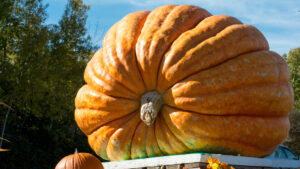Carawine touches down on the ASX, but investors don’t bring the love

Carawine Resources — a spin-out from mineral sands explorer Sheffield Resources — had a steady ASX debut on Thursday afternoon.
“We were massively oversubscribed in the IPO,” managing director David Boyd told Stockhead just before Carawine joined the bourse.
“We’re hoping that will translate into some support on the market for people who missed out or people who want to top up.”
But the shares (ASX:CWX) stubbornly traded in a band of 19c to 20.2c throughout the session and ended the day at their 20c initial public offer price.
Around 1.8 million shares changed hands in 90 trades valued at just under $350,000.
In October, Sheffield (ASX:SFX) kicked off the process of demerging its secondary gold and base metal assets into Carawine Resources to free it up to focus on the mighty Thunderbird mineral sands project in the Canning Basin of Western Australia.
The $7 million IPO closed heavily oversubscribed following strong interest from new investors and existing Sheffield shareholders.
“It’s the right time for Carawine to come out of Sheffield,” Mr Boyd said. “It wasn’t particularly timed for the upturn in the market, it was just a happy coincidence for us.”
Original Sheffield board members — Will Burbury, Dave Archer and Bruce McQuitty, along with Mr Boyd who was the company’s exploration manager from day one — have joined Carawine and are looking to unlock “true value”.
“Essentially we’re getting the team back to their roots, back to exploration and see if we can add value again,” Mr Boyd said.
“Bruce and Will were involved at Warwick Resources — they went from a market cap of $10 million up to $80-odd-million before they merged with Atlas. Sheffield started off at $7 million and they’re up to $155 million now. So we’re looking to repeat the dose with Carawine.”
The cash raised will be used to fund Carawine’s exploration program, starting with diamond drilling at the flagship Jamieson gold and base metals project in Victoria in the first quarter of 2018.
The project hosts the Hill 800 prospect where drilling by previous explorers returned high grades of up to 122 grams per tonne of gold.
“It was discovered in the late 90s by New Holland and they were sensational numbers and from surface,” Mr Boyd told Stockhead.
“You’re hard pressed to find those intervals around Australia at that moment that aren’t related to an operating mine.”
UNLOCK INSIGHTS
Discover the untold stories of emerging ASX stocks.
Daily news and expert analysis, it's free to subscribe.
By proceeding, you confirm you understand that we handle personal information in accordance with our Privacy Policy.








